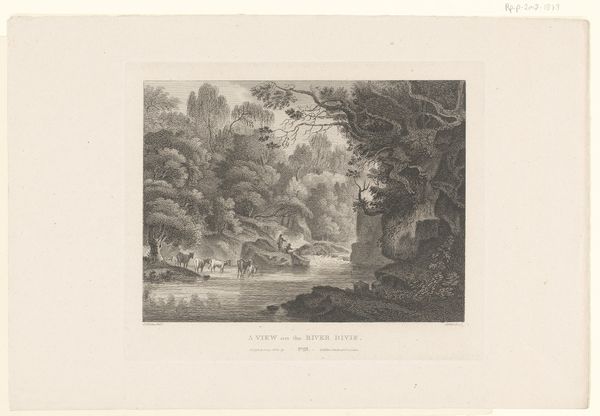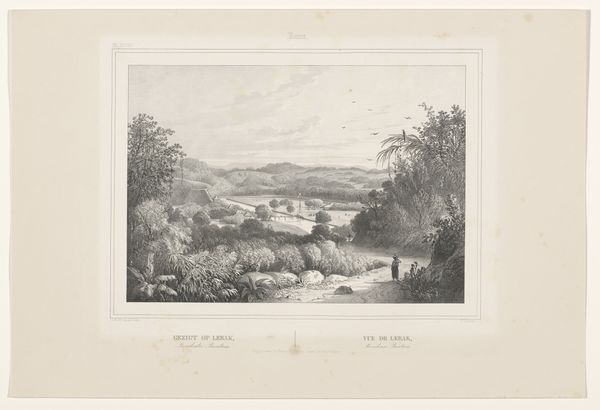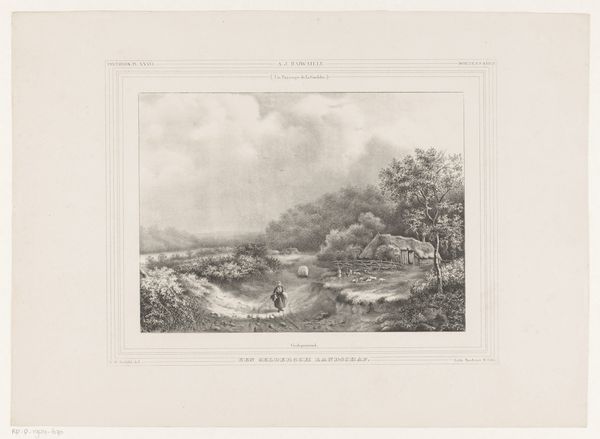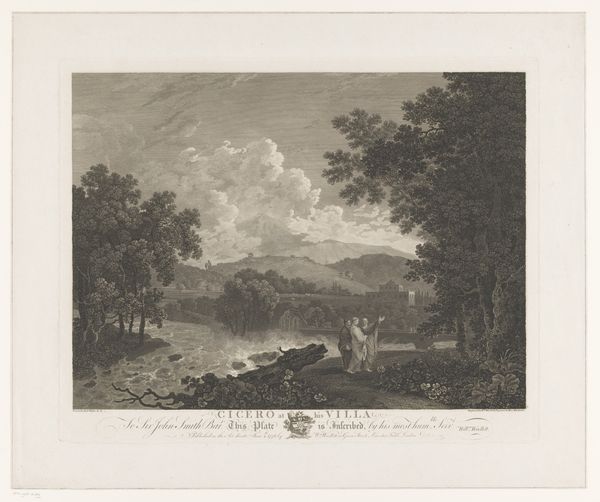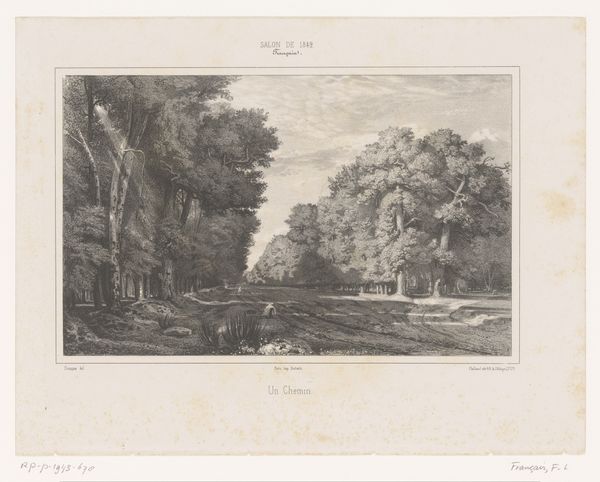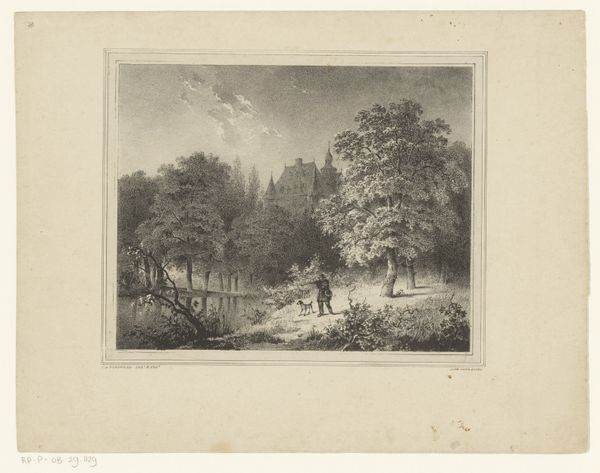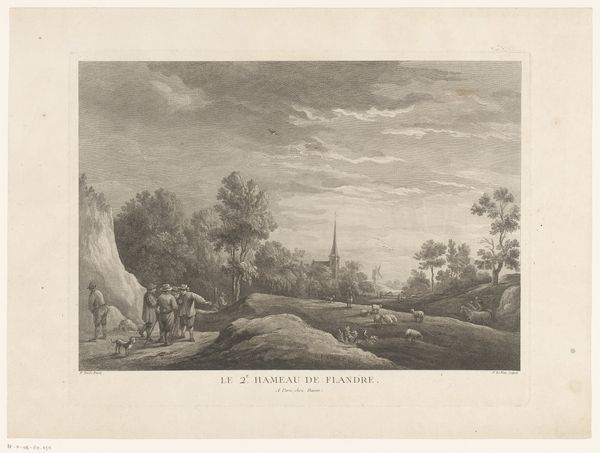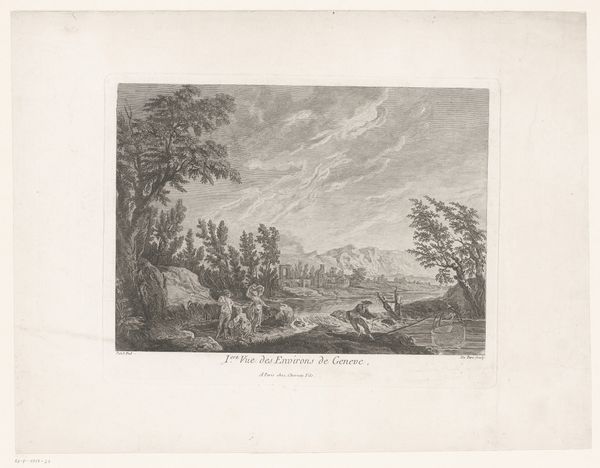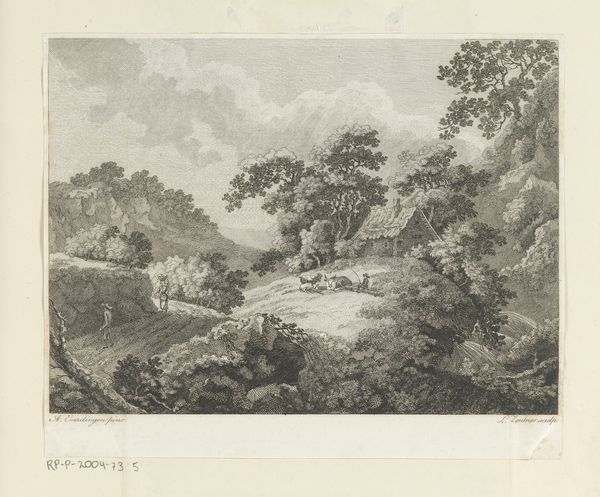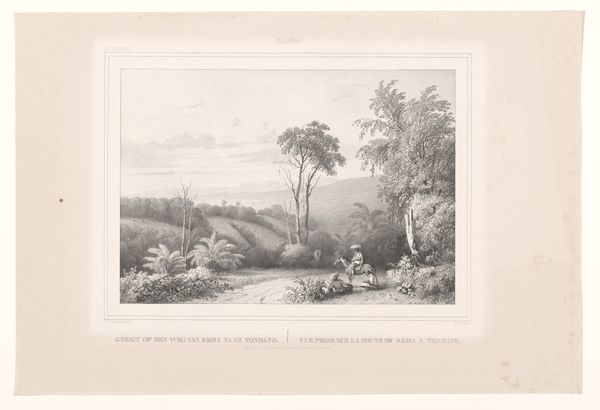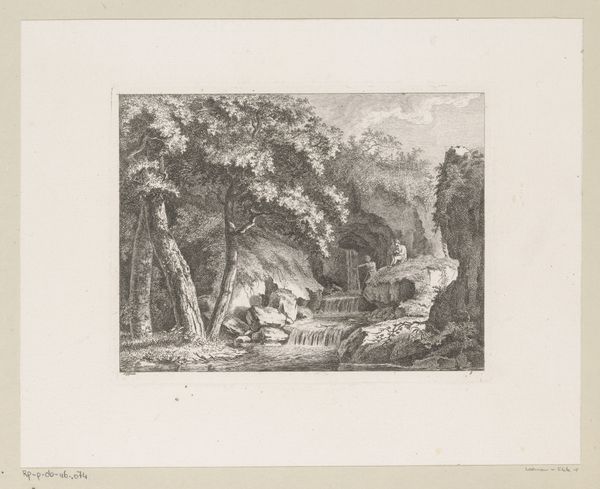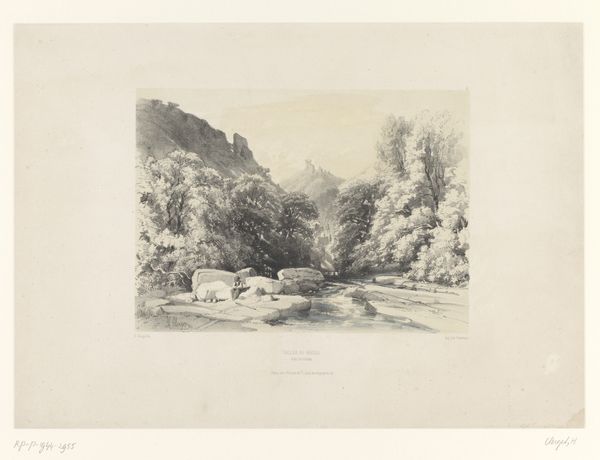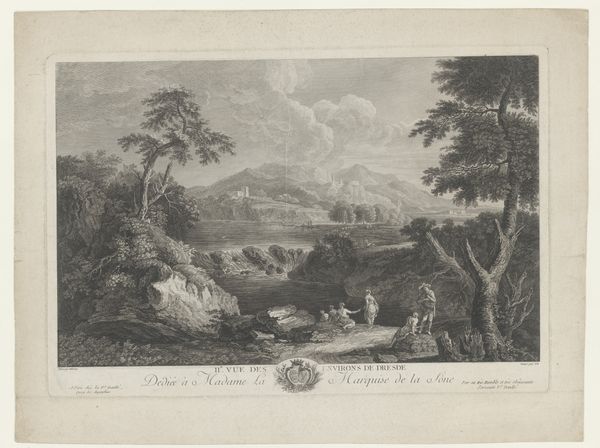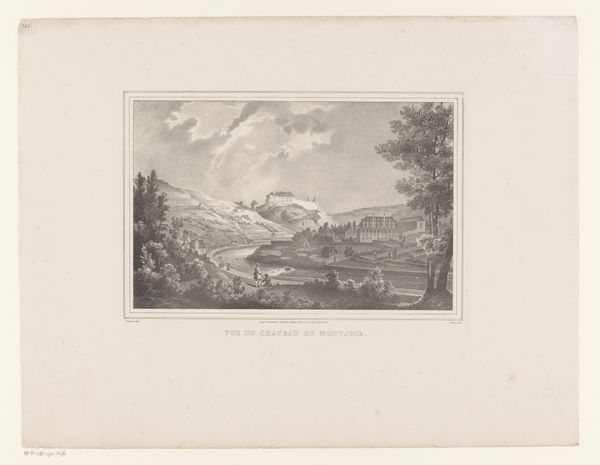
#
photo of handprinted image
#
aged paper
#
toned paper
#
light pencil work
#
pale palette
#
ink paper printed
#
light coloured
#
white palette
#
soft colour palette
#
watercolor
Dimensions: height 534 mm, width 715 mm
Copyright: Rijks Museum: Open Domain
Francis Nicholson made this print of Loch Venachar, a body of water in the Scottish Highlands. The print was made using a technique called aquatint, which involves etching a metal plate to create tonal effects. Aquatint prints like this one were very popular in the late 18th and early 19th centuries, partly because they could be mass-produced and distributed. The process involves covering a copper plate with a porous ground, often resin, then exposing it to acid. The acid bites around the resin particles, creating a texture that holds ink. This is a key part of understanding the image's social context. It was part of a boom in the print trade, with a division of labor. One person created the image, others etched the plate, and still others printed it. Prints like this one democratized image production in a way that paintings never could. So next time you see a print, think about the many hands that went into its making.
Comments
No comments
Be the first to comment and join the conversation on the ultimate creative platform.
